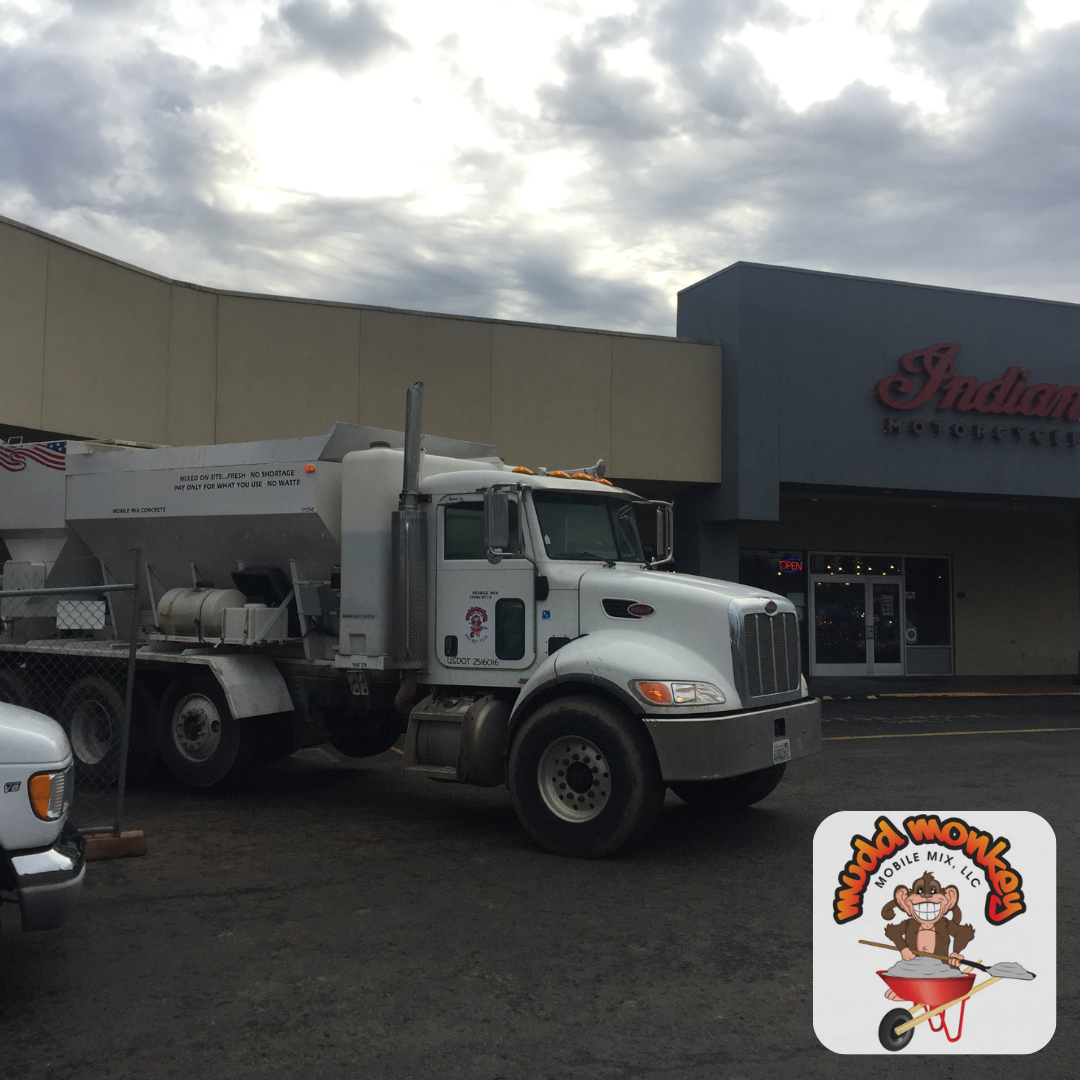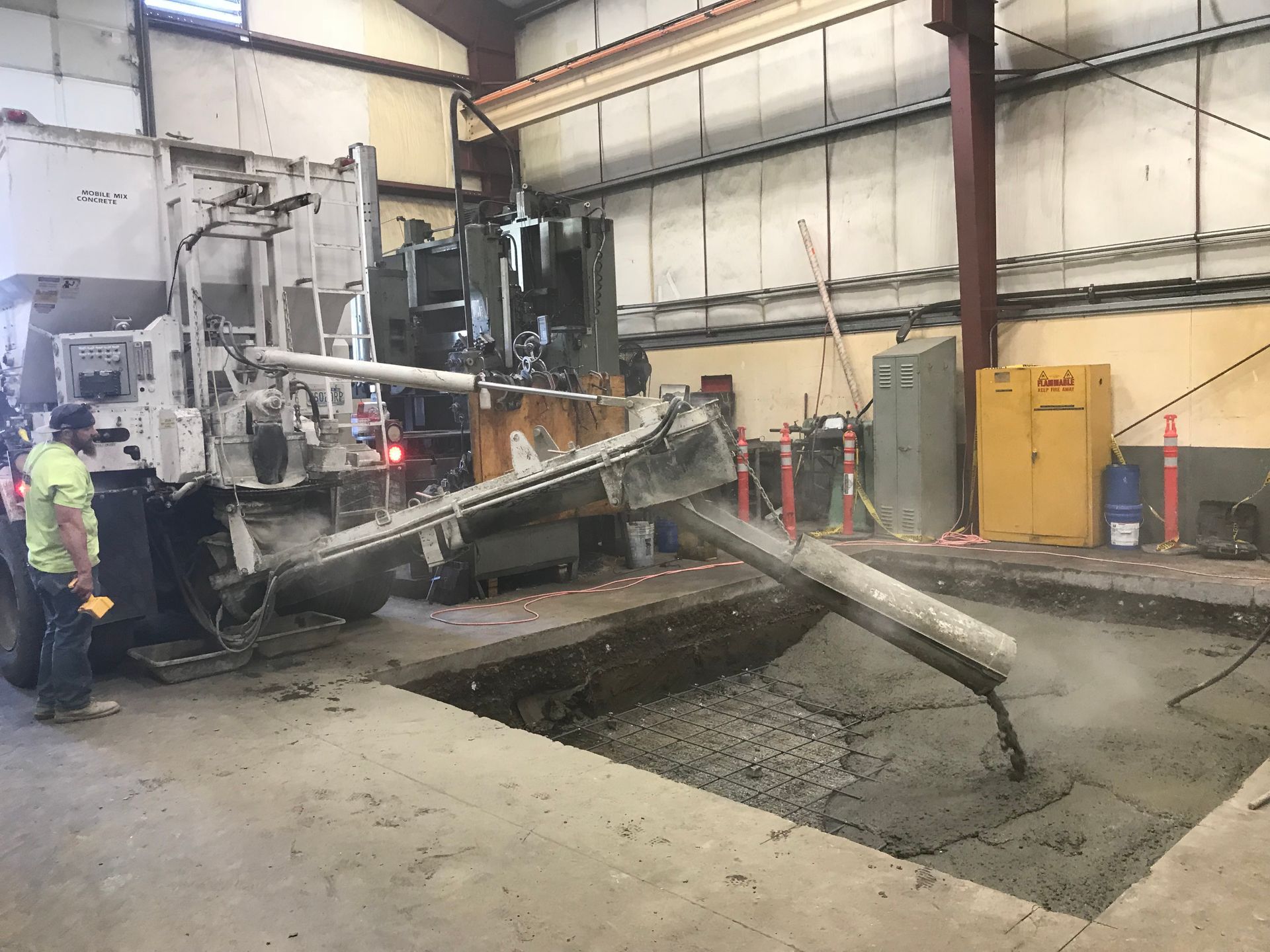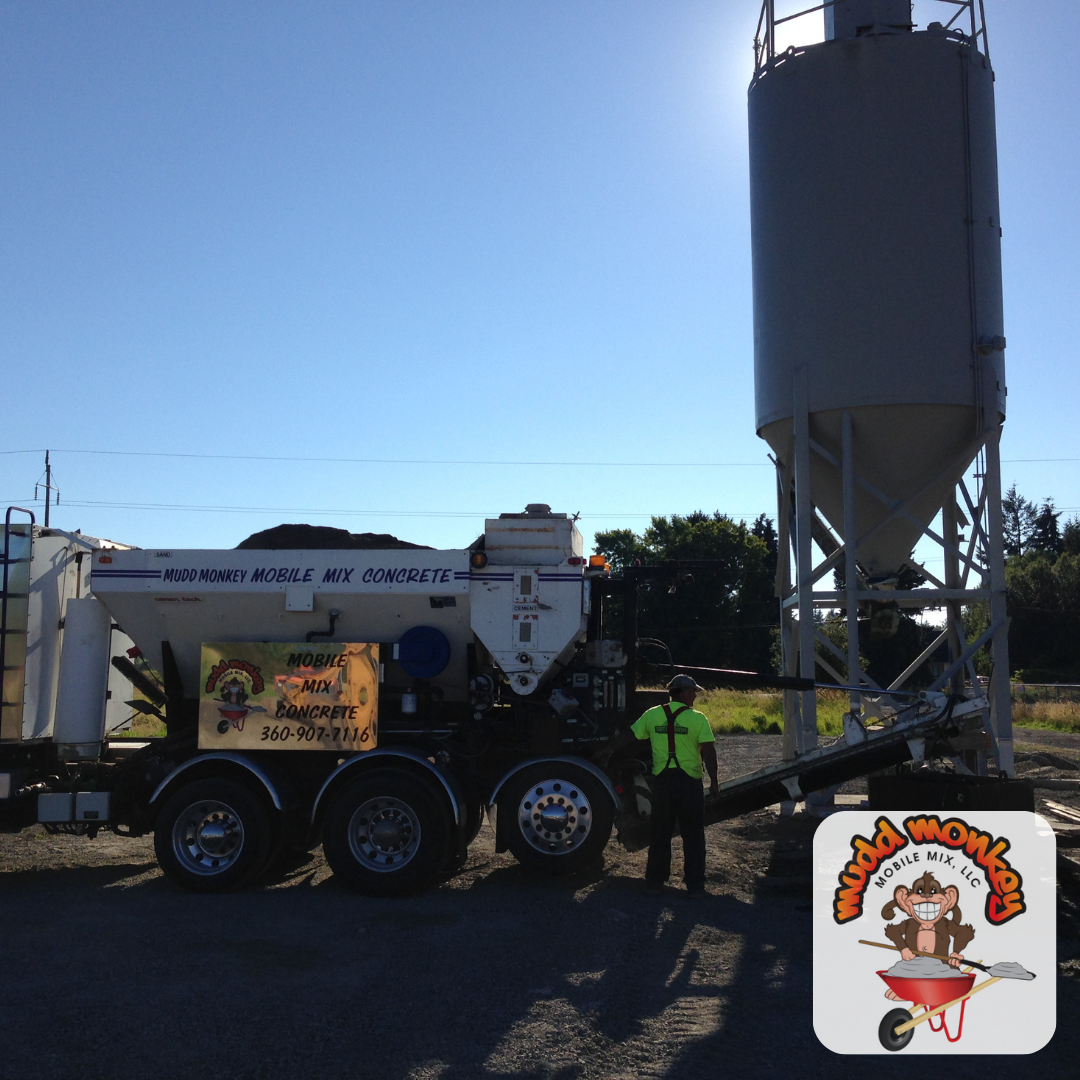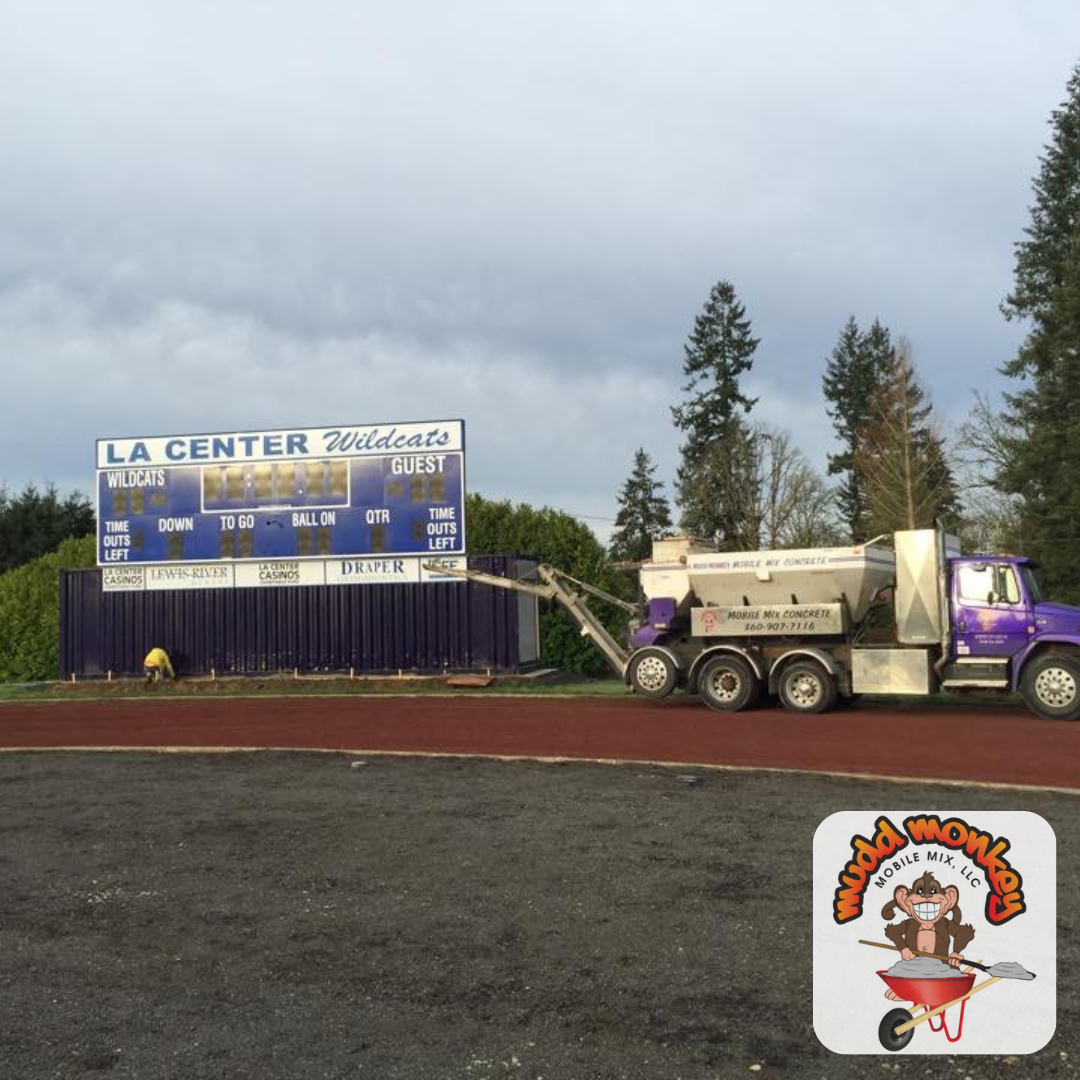Concrete
UNDERSTANDING CONCRETE: MEANING, BASICS, AND BEST PRACTICES BY MUDD MONKEY MOBILE MIX
Our Passion for Exceptional Concrete
Concrete is more than just a building material—it’s the foundation of durability and strength. At Mudd Monkey Mobile Mix, we believe in empowering you with the knowledge to make the best concrete decisions. Whether you're pouring a driveway, patio, or foundation, this guide breaks down what concrete is, how it works, and why the right mix matters.
Proper preparation is key to long-lasting concrete. Learn how to plan your project, choose the right mix, and ensure a solid base before pouring. We’ll walk you through essential steps like site prep, forming, and drainage considerations to help you get the best results.
Caring for concrete doesn’t stop after it’s poured. Discover expert tips on curing, sealing, and maintaining your concrete to prevent cracks and damage over time. With
Mudd Monkey Mobile Mix, you’re not just getting fresh,
on-site mixed concrete—you’re gaining the knowledge to keep it strong for years to come.
CONCRETE & MUDD MONKEY MOBILE MIX
CONCRETE OUR PASSION SINCE 2014
Mudd Monkey Mobile Mix specializes in on-site, short-load concrete delivery for both commercial and residential customers. Our innovative mobile batch plant allows us to mix concrete on-demand, ensuring that you receive the freshest concrete with the flexibility to adjust the mix as needed.
Every order is custom-mixed to your exact specifications, guaranteeing that you receive the perfect concrete mix for your project.
OUR SERVICES
We offer a wide range of custom concrete solutions, including:
- On-Site Concrete Mixing – Our mobile concrete trucks allow us to mix only what you need, eliminating waste and saving you money.
- Custom Concrete Mixes – Whether you need high-strength concrete, fiber-reinforced concrete, or decorative concrete, we tailor our mixes to meet your requirements.
- Flexible Delivery Options – Based in Ridgefield, WA, we proudly serve Vancouver, WA, Battle Ground, WA, Camas, WA, Washougal, WA, Ridgefield, WA, La Center, WA, and Woodland, WA.
WHAT YOU'LL DISCOVER ON OUR WEBSITE
As you explore our website, you’ll learn about:
- Who we are and why Mudd Monkey Mobile Mix is a trusted name in concrete delivery.
- What concrete is, how it works, and the different types of concrete mixes.
- A robust concrete calculator to help you estimate your project needs.
- Our service areas, locations, and why
on-site mixed concrete is a game-changer for your project.
GETTING TO KNOW CONCRETE
Concrete is the backbone of construction, shaping everything from sidewalks and driveways to towering skyscrapers. Its strength, durability, and versatility make it essential for both residential and commercial projects. But what exactly is concrete, and how do you ensure it lasts?
This concrete guide explores the fundamentals of concrete, including:
- What is Concrete? – A composite material made of cement, aggregates, water, and admixtures, forming a solid, durable structure through the hydration process.
- The Basics of Concrete – Different types, strengths, and applications, including ready-mix, precast, reinforced, and decorative concrete.
- Planning & Preparation – Site preparation, proper excavation, forming, and drainage, and ensuring a solid base for durability.
- Choosing the Right Concrete Mix – Understanding concrete strength (PSI), slump, water-cement ratio, and chemical additives for performance.
- Concrete Placing & Finishing – Best practices for pouring, leveling, screeding, floating, troweling, and texturing to achieve a smooth, long-lasting surface.
- Curing & Drying – The importance of moisture retention, temperature control, and proper curing methods for long-term strength.
- Concrete Longevity – Sealing, maintenance, and protection against weather, moisture, and cracking to extend the lifespan of your concrete.
By understanding how to mix, place, and care for concrete, you’ll gain the knowledge to ensure a strong and lasting foundation for any project. Whether you’re tackling a DIY job or a large-scale build, this guide will help you make informed, confident decisions.
Meaning and Definition of Concrete
Concrete is a composite material made from a mixture of cement, aggregates (such as sand and gravel), water, and chemical admixtures. When mixed properly, these components form a hard, stone-like substance that provides structural integrity and longevity. Unlike cement, which is just one ingredient in concrete, the final product is a fully hardened building material that withstands various environmental conditions.
What is Concrete Made Of?
Concrete consists of four primary components:
- Cement – The binding agent that holds the mixture together.
- Aggregates – Sand, gravel, or crushed stone that provide bulk and strength.
- Water – Reacts with cement to start the hardening process (hydration).
- Admixtures – Chemical additives used to modify workability, setting time, or strength.
The right mix proportions influence the final strength and durability of concrete, making it essential to use the correct ratios for specific applications.
The Basics of Concrete
Concrete is classified based on how it is delivered and its specific type and mix for different applications. Choosing the right concrete ensures durability, strength, and efficiency for your project.
Two Types of Concrete Delivery
- Ready-Mix Concrete – Pre-mixed at a batch plant and transported in rotating drum trucks. Best for large-scale projects requiring consistent quality but has limited time before setting.
- Volumetric Concrete Mixer (Mobile Mix Concrete) – Mixed on-site using a volumetric concrete mixer, allowing for precise customization and reducing waste. Also known as short-load concrete delivery or mini-mix concrete, and mobile mix concrete delivery this method is ideal for smaller jobs, larger jobs, remote locations, or projects needing multiple concrete mix designs in one pour.
Types of Concrete
Concrete is formulated for different strengths, compositions, and applications:
- Standard Concrete – General purpose concrete with varying PSI ratings for sidewalks, driveways, and foundations.
- High-Strength Concrete – Designed for heavy loads and structural durability, typically exceeding 6,000 PSI.
- Lightweight Concrete – Uses expanded aggregates for weight reduction, often found in roof decks and precast panels.
- Self-Consolidating Concrete (SCC) – Highly flowable concrete that fills forms without vibration, reducing labor time.
- Shotcrete – Concrete sprayed at high velocity onto surfaces, commonly used for tunnels, retaining walls, and pool construction.
Concrete Mixes & Additives
Concrete mixes are designed for specific properties and performance:
- Air-Entrained Concrete – Contains tiny air bubbles to improve freeze-thaw resistance in cold climates.
- Fiber-Reinforced Concrete – Mixed with fibers (steel, glass, or synthetic) to enhance strength and crack resistance.
- Fast-Setting Concrete – Ideal for quick repairs, setting within minutes to hours.
- Water-Reducing & Superplasticizer Mixes – Improve workability while maintaining strength with less water.
By understanding delivery methods, concrete types, and mix designs, you can select the best solution for your project. Whether you need a large-scale pour or a short-load custom mix, the right choice ensures long-lasting, high-performance results.
Planning & Preparation for Pouring Concrete
Proper preparation is key to a strong, durable concrete surface that resists cracking and settling over time. Follow these essential steps to ensure a successful pour.
1. Site Preparation
- Clear debris, tree roots, and organic material to prevent uneven settling.
- Mark out the area and check for underground utilities before excavation.
2. Thickness Selection
- Most residential slabs (driveways, patios, sidewalks) require a 4-inch thickness.
- Heavy-load areas (garage floors, parking pads) may need 5–6 inches.
3. Base Material & Compaction
- Use a compacted gravel base (typically 4–6 inches thick) for stability.
- Proper compaction prevents settling and increases concrete longevity.
4. Drainage Considerations
- Slope the surface ¼ inch per foot to prevent water pooling.
- Ensure water drains away from structures to avoid foundation damage.
5. Excavation & Ground Preparation
- Compact the subgrade to prevent shifting.
- Avoid pouring on soft, loose, or muddy ground, which leads to weak spots.
6. Forming & Joint Placement
- Use
wood or metal forms to create the desired slab shape and keep edges clean.
Plan expansion and control joints:
- Pre-molded joints where new concrete meets existing structures.
- Saw-cut joints after the concrete sets to prevent cracks from natural shrinkage.
- Cut joints using hand tools when the concrete is fresh.
7. Weather Considerations
- Hot weather: Lightly moisten the ground before pouring to prevent it from absorbing moisture too quickly from the concrete.
- Cold weather: Avoid pouring on frozen ground, as it can lead to poor curing and weak concrete.
- Rainy conditions: Ensure no standing water is present in the pour area to prevent mix dilution and weak spots.
Concrete Specifications & Choosing the Right Mix
Selecting the correct mix ensures long-term performance. Factors to consider include:
- Strength – Measured in PSI (pounds per square inch), with 3,500 PSI recommended for freeze-thaw climates.
- Slump – A measure of workability; typically 4 inches (+/- 1 inch) is ideal.
- Chemical Additives – Used to accelerate, slow down, or improve the concrete mix.
Concrete Placing & Finishing
Placing and finishing concrete correctly affects its strength and appearance:
- Placing – Pour the concrete continuously to avoid weak spots. Do not dump in separate piles.
- Consolidation – Use vibration to eliminate air pockets and improve density.
- Finishing Techniques – Choose from screeding, floating, troweling, and broom finishing for the desired texture.
Curing & Drying Concrete Properly
Curing is one of the most critical steps for ensuring concrete strength:
- Moisture Retention – Keep the surface wet for at least 5-7 days.
- Temperature Control – Protect against extreme heat or cold.
- Common Curing Methods – Use wet curing, plastic coverings, or liquid membrane sprays.
After curing, concrete needs time to dry before exposure to heavy loads. Ideally, allow a month of above 40°F temperatures before subjecting it to freeze-thaw cycles.
Additional Tips for Concrete Longevity
To maximize the lifespan of concrete, consider these tips:
- Sealing – Apply a water-repellent sealer to prevent moisture damage.
- Winter Care – Avoid using deicers during the first winter; sand is a safer alternative.
- Proper Drainage – Ensure water does not pool on or around the concrete surface.
By following these guidelines, you can achieve durable, long-lasting concrete for any project. Proper planning, concrete mixing, placing, and curing are essential to ensuring a successful installation that will stand the test of time.







